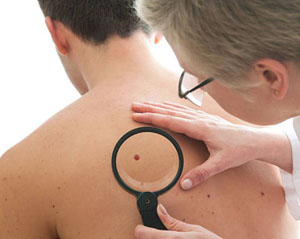Mohs wins out again

Recent published study confirms Mohs micrographic surgery as the patients treatment of choice even for superficial skin cancers. Patients in the study preferred Mohs surgery not only because it gave a better long term cure rate but it was seen as a much more tolerable procedure compared to the alternative treatments.
Link to abstract:
https://insights.ovid.com/crossref?an=00042728-900000000-99021
Treatment Patterns, Outcomes, and Patient Satisfaction of Primary Epidermally Limited Nonmelanoma Skin Cancer
Dermatologic Surgery. Publish Ahead of Print():, JUN 2017
Benjamin A. Drew; Pritesh S. Karia; and 3 more
TAKE-HOME MESSAGE
-
- In this retrospective cohort study, 550 patients with superficial basal cell carcinoma (BCC) and squamous cell carcinoma in situ (SCCis) were treated with either Mohs micrographic surgery (MMS) or non-MMS (5% 5-fluorouracil, cryotherapy, ingenol mebutate, or imiquimod). Although both groups had high 5-year recurrence-free survival, this was significantly higher with MMS compared with non-MMS (99% vs 95%, respectively; P = .004). Moreover, 97% of MMS patients were willing to undergo another treatment compared with 86% of non-MMS patients (P = .024). Results from a satisfaction survey offered to 25% of patients indicated that a prolonged treatment course and pain contributed to dissatisfaction on the part of the patients who did not undergo MMS.
- This study found low recurrence rates with both surgical and nonsurgical treatments for superficial BCC and SCCis. However, MMS was associated with higher patient satisfaction and cure rates compared with non-MMS.
– InYoung Kim, MD, PhD
BACKGROUND
Epidermally limited nonmelanoma skin cancer (ELNMSC) (superficial basal cell carcinoma [SBCC] and squamous cell carcinoma in situ [SCCIS]) is common. Data on outcomes and patient satisfaction are lacking.
OBJECTIVE
To examine treatment efficacy and satisfaction in ELNMSC patients.
PATIENTS AND METHODS
Retrospective cohort study of adults with primary SBCC or SCCIS. A 25% random subset completed a satisfaction questionnaire.
RESULTS
Five hundred and fifty patients with 227 SBCC and 451 SCCIS were included; 329 tumors (49%) were treated with Mohs micrographic surgery (MMS) and 349 (51%) with non-MMS (imiquimod [n = 26], 5% 5-fluorouracil [n = 234], ingenol mebutate [n = 32], or cryotherapy [n = 57]). Five-year recurrence-free survival was high in both groups, with MMS having a small but statistically significant advantage (99% vs 95%, p = .004). More MMS patients were willing to undergo treatment again (97% vs 86%, p = .024). Dissatisfaction was mostly due to prolonged treatment course and pain associated with non-MMS treatments.
CONCLUSION
Surgical and nonsurgical treatments for primary ELNMSC have low recurrence rates, though cure rate and patient satisfaction are higher with MMS. Treatment choice for epidermal NMSC may be guided through patient preferences regarding ability to comply with topical treatment, out-of-pocket costs, desire to treat surrounding field disease, and desire to avoid a surgical scar.
